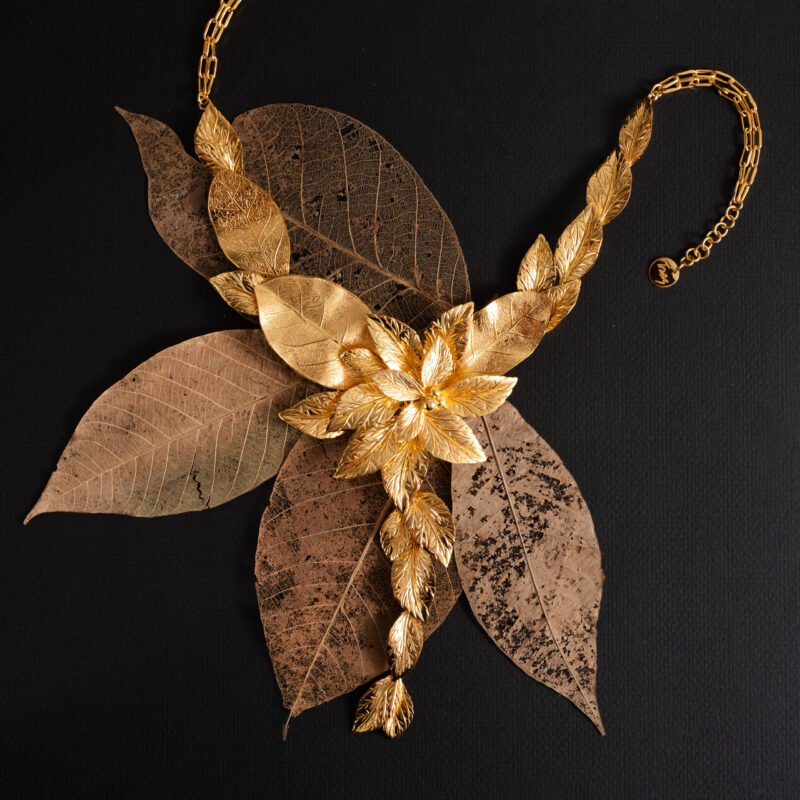
This site
is mobile
responsive
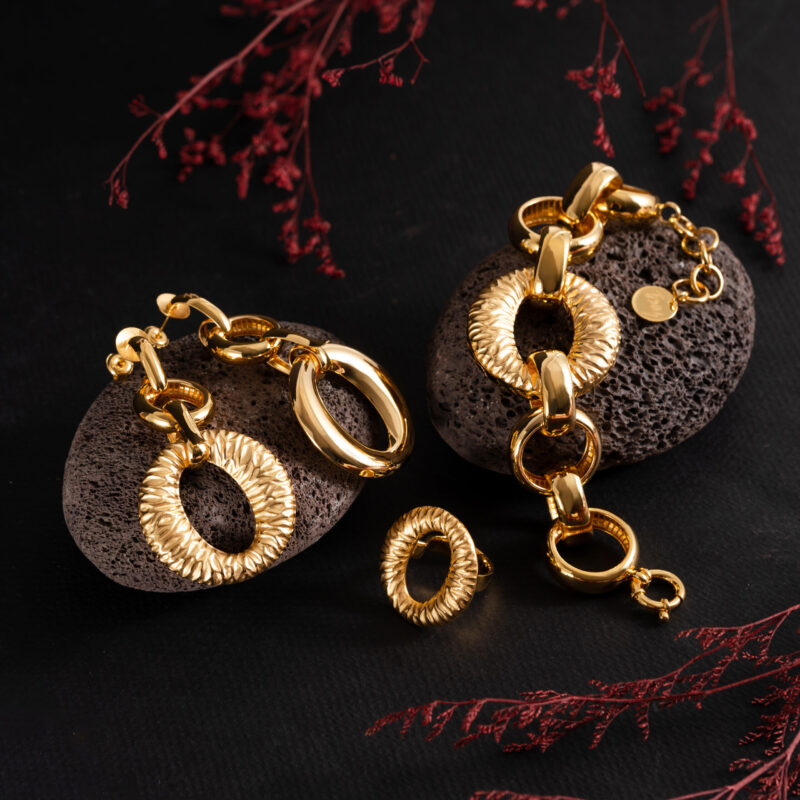
Malaysia’s gold jewellery industry shines with vibrant diversity and economic vitality. Boasting over 100 manufacturers, the sector caters to a strong domestic demand while ranking fourth among ASEAN countries. Malaysia specialises in 916 Gold (22K), with a touch of imports from Turkey, Italy, and China. With its rich cultural heritage and strategic location, Malaysia creates exquisite designs inspired by its diverse ethnic groups. As the industry gains global recognition, Malaysia emerges as a trendy destination for luxury gold jewellery.
Malaysia is a home to some of the world’s finest gemstones, such as ruby, blue sapphire, emerald, pearls and jade. These gems, intricately designed with myriad of gemstone and fuse with multicultural influence, adds value and vibrancy to the jewellery products.
Nestled in Penang, the heart of jewellery manufacturing, talented craftsmen, designers, and artisans create over 70% of high-quality gold jewellery that meets the international standards. Renowned for their craftsmanship and filigree work, Malaysia’s eclectic jewellery landscape captivates both domestic and international tourist, offering a truly mesmerising experience.
But it’s not just about beauty and artistry—Malaysia’s jewellery industry serves as a catalyst for employment opportunities, innovation, and export potential. As the industry flourishes it also fuels the development of related sectors like gemstone mining, cutting and polishing, as well as tourism. To maintain a competitive edge on the global stage, Malaysia’s industry players embrace the latest technological advancements, positioning themselves at the forefront of industry trends, at par with other developed countries.
The jewellery industry in Malaysia has experienced a steady growth trajectory over the years. In 2018, the Malaysian government fulfilled one of its key promises by zero-rating the goods and services tax (GST) for the jewellery industry which garnered positive reception by the industry and contributed to increased sales.
According to Euromonitor International, Malaysia’s jewellery market is set to grow annually by 3.73% (CAGR 2023-2026), reaching a market value of USD1.87 billion by 2026. This growth can be attributed to factors, such as the rising disposable income and purchasing power of the middle class have fuelled the demand for jewellery. Fashion-conscious women and young consumers are willing to invest in accessories that reflect their style and enhance their personal fashion statements.
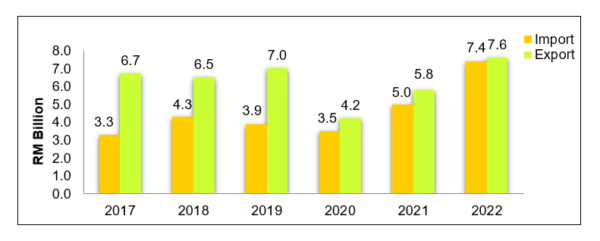
Graph 1: Gold Jewellery Export (2017-2022)
Additionally, the growing popularity of online shopping that offers convenience, variety and competitive prices has been instrumental in driving the industry’s growth. Statista predicts that the online revenue share of the jewellery segment in Malaysia will reach 18% by 2023.
Surpassing local consumption, the country stands as a significant exporter of 916 gold jewellery. In 2022, it ranked among the top 10 export countries for gold jewellery, with key destinations including the UAE, Singapore, and Hong Kong.
Poh Kong, Tomei, Wah Chan, Habib Jewel and DeGem – illustrious local brands that have captivated the global market. From stunning gold bangles to captivating diamond rings, elegant pearl necklaces to jade pendants adorned with Islamic calligraphy, these brands offer a diverse range of jewellery that celebrates Malaysia’s rich heritage and ethnicities.
Rooted in tradition, the jewellery industry has embraced new technologies to drive innovation and modernise its processes. Recent advancements have revolutionised manufacturing, enhancing efficiency, effectiveness, and sustainability. This transformative landscape presents exciting opportunities for growth and development.
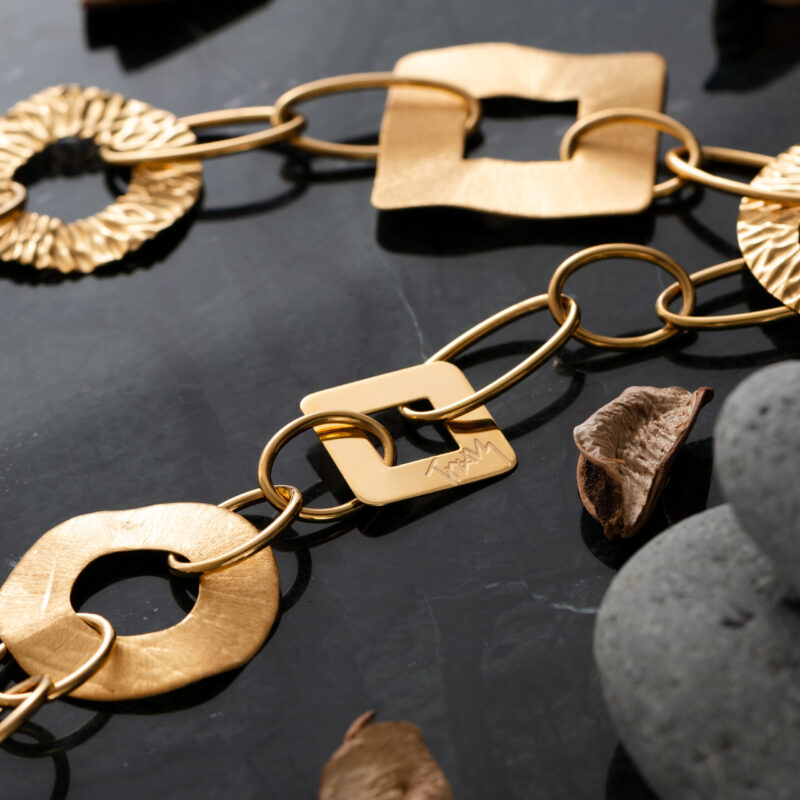
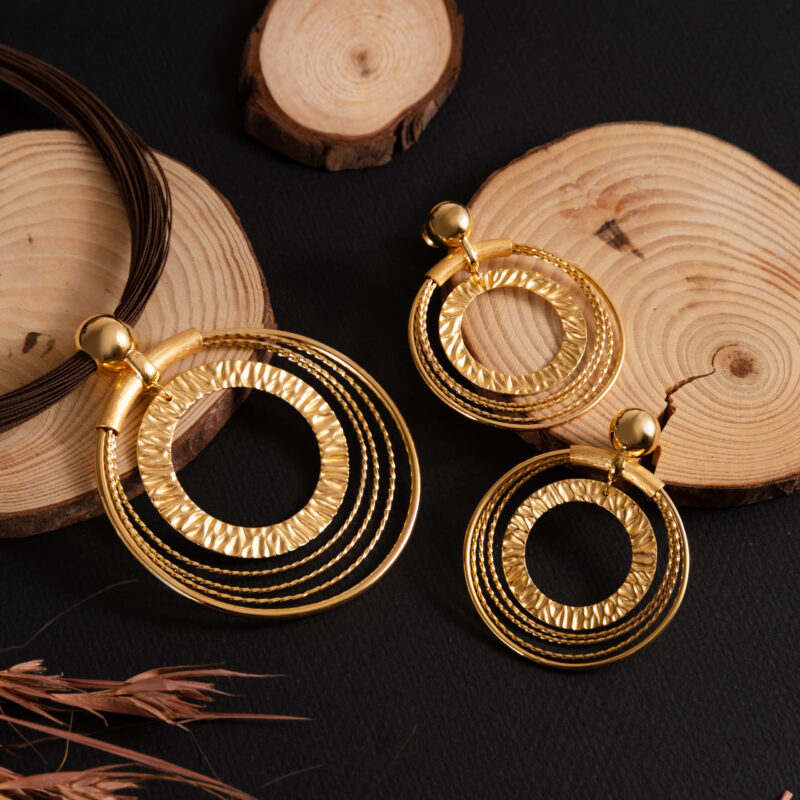
Laser technology ensures precise cutting and engraving of metals, enabling the creation of intricate and detailed designs with seamless precision. Moreover, lasers are utilised for metal welding, resulting in enhanced quality and durability of jewellery pieces, making them more visually appealing and long-lasting.
Computer-Aided Design (CAD) software has significantly transformed the industry by providing designers with a platform to experiment with various designs and make modifications without the need for physical prototypes. This streamlined approach not only accelerates the design process but also enhances efficiency and effectiveness throughout the manufacturing phase.
Furthermore, the emergence of Augmented Reality (AR) technology is reshaping the industry by offering customers a virtual try-on experience. Through AR, jewellery retailers can integrate virtual objects into the real world, allowing customers to visualise how a piece would look and fit before making a purchase. This interactive and immersive shopping experience enhances customer engagement and provides a unique selling proposition for online jewellery stores.
China stands as a prominent global hub for jewellery manufacturing, boasting advanced manufacturing processes and technologies. Other countries like India, Thailand, and Vietnam also possess sophisticated jewellery industries, specialising in various aspects such as gemstone cutting and polishing, goldsmithing, and casting.
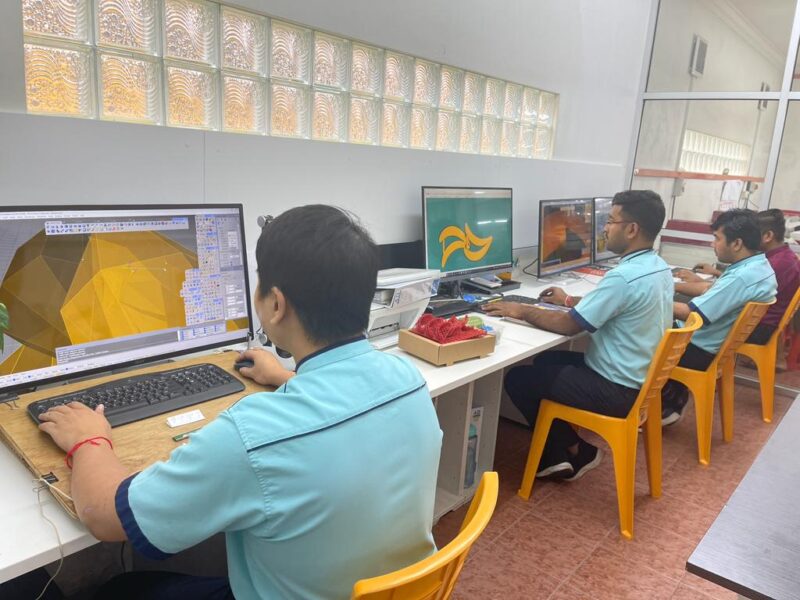
To stay at the forefront of the ever-evolving jewellery industry, local manufacturers in Malaysia actively participate in renowned global jewellery fairs. These platforms serve as valuable opportunities for manufacturers to stay updated with the latest trends and designs in jewellery, as well as explore cutting-edge machinery offered by renowned suppliers from countries such as Italy, Germany, Switzerland, and Turkey.
In line with global trends, Malaysian jewellers are embracing transformative technologies that add additive value to their product offerings. These technologies include 3D printing, laser technology, Computer-Aided Design (CAD), and Augmented Reality (AR). By adopting these innovations, jewellers can expand their product variety and meet the evolving demands of customers. Recognising the importance of staying up-to-date with the latest trends and innovations, the Malaysian government actively encourages research and development within the jewellery industry. This commitment ultimately contributes to fostering a more competitive and sustainable jewellery industry in Malaysia.
The government through Malaysian Investment Development Authority (MIDA) provides incentives to the companies undertaking the manufacturing of jewellery of precious metals. The incentives offered are to encourage jewellery manufacturers to produce high-value products and adoption of technologies such as automation and Industry 4.0 (Industry 4WRD).
Eligible manufacturers can be considered for Tax Incentives either Pioneer Status (PS) or Investment Tax Allowance (ITA). Additionally, the Industry4WRD Intervention Fund is provided to support SMEs in implementing Industry 4.0 intervention projects by providing a matching grant on a reimbursable basis. Meanwhile, existing companies looking to incorporate automation technologies into their manufacturing operations can explore Automation Capital Allowance (Automation CA).
The Malaysian Government offers training and technical courses for jewellery makers and designers to improve their skills and knowledge. Upskill Malaysia, serves as an integrated centralised platform where individuals can search for and apply to various skills development programmes offered by the Government.
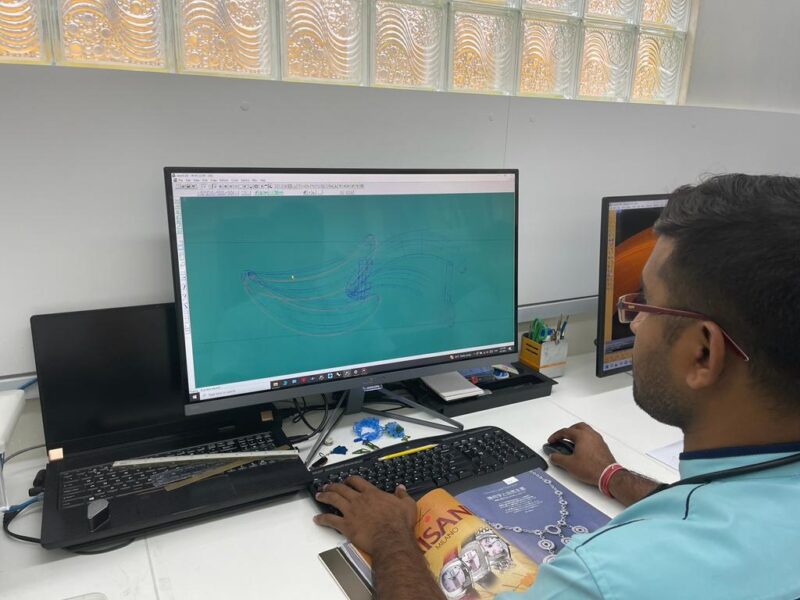
Another option is the Malaysian Skills Certificate (SKM) offered by the Department of Skills Development (DSD). This certification offers five levels of authentication: Malaysian Skills Certificate (SKM) Level 1-3, Malaysian Skills Diploma (DKM), and Malaysian Advanced Skills Diploma (DLKM). The Malaysian Skills Certification may be obtained through training at a recognised institution, Industry-Oriented Training (SLDN), and Accreditation of Prior Achievement (PPT). Additionally, private institutions like Raffles College Kuala Lumpur and INTI International University offer diploma courses in jewellery design covering various topics including design fundamentals, gemmology, jewellery manufacturing, jewellery rendering, metalworking techniques, marketing, and entrepreneurship.
Malaysia’s jewellery industry illuminates the remarkable transformation of traditional craftsmanship into a thriving modern business, generating wealth and abundant opportunities. Boasting a rich array of offerings, a strong competitive edge, and promising prospects, Malaysia’s jewellery industry stands ready to radiate even more brilliantly in the years to come, supported by the unwavering commitment of the government.
To learn more about investment opportunities in the jewellery industry, please contact the Building Technology and Lifestyle Division, MIDA at https://www.mida.gov.my/staffdirectory/building-technology-lifestyle-division/
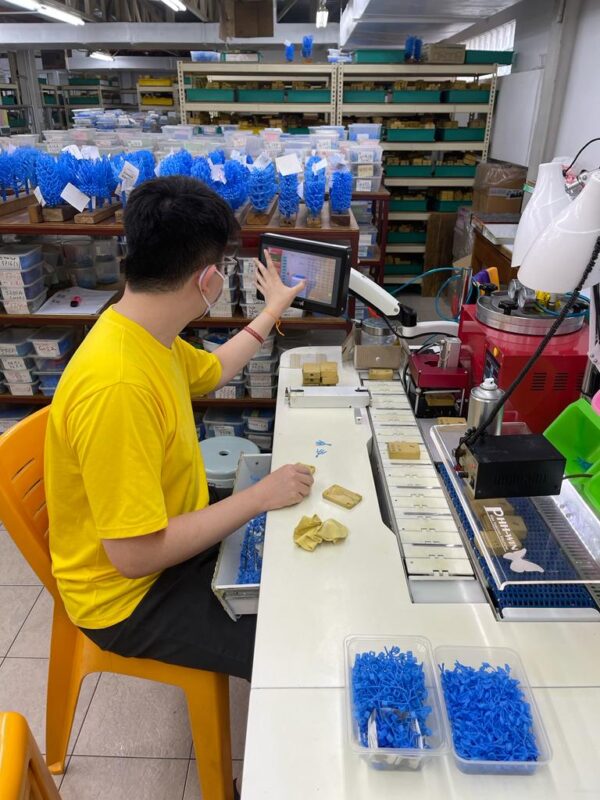
Credit to: Federation of Goldsmiths and Jewellers Association of Malaysia (FGJAM), Province Wellesley Gold and Silver Ornament Merchants Association (PWGS), Poh Kong Holdings Bhd, and Sin Ter May Sdn. Bhd.